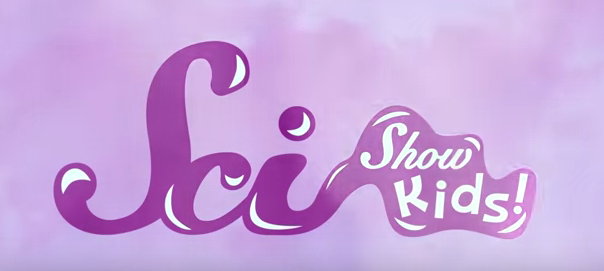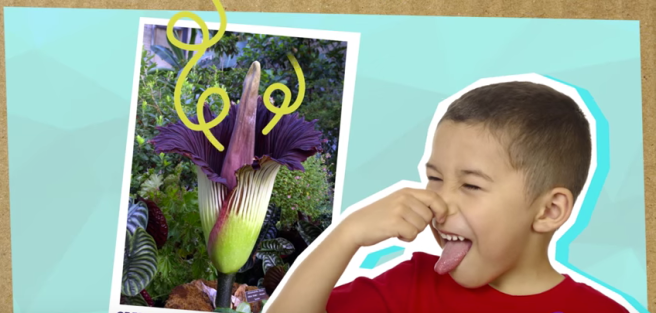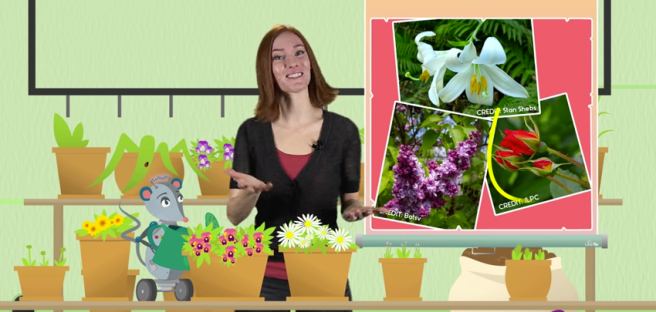You may have heard of the new kid on the block in the world of children’s media – in November 2015, YouTube Kids celebrated its Canadian launch. While there has been criticism regarding some of the app’s content, it’s undeniable that there are some real gems scattered throughout the platform’s child-oriented channels. Among these gems is a series called SciShow Kids. Using a mixture of live-action and simple animation, SciShow Kids answers questions about science and the natural world, while (more importantly) encouraging kids to ask their own questions.

Listen, I know you’re not here to read a SciShow Kids sales pitch, but I’m extremely happy that this channel exists and I need to tell you why. I’ve been a fan of SciShow (SciShow Kids’ parent channel) since its launch in 2011. I’m in love with the idea of a YouTube channel that makes science-related news, lessons, and discussions accessible for the casual viewer. SciShow Kids translates that valuable learning tool to a format accessible to the audience who perhaps needs it the most – children. And not just any children, but very young children. Although SciShow Kids’ YouTube-based channel doesn’t market itself to a specific age group, according to the iTunes Store YouTube Kids is made for children under 5. So, through the YouTube Kids app the channel is primarily watched by Kindergarteners and Preschoolers. Children this age are just beginning to understand the world they live in, just beginning to investigate and ask questions, and just beginning to form likes and dislikes that may carry through a lifetime. In other words, this is an ideal age for children to start getting excited about science.

The school system knows this. Ontario’s Full-Day Early Learning Kindergarten Curriculum (which I’ll be using here as a reference to help discuss SciShow Kids’ specific educational merits) builds its Science curriculum around the guiding principal that Children are curious and connect prior knowledge to new contexts in order to understand the world around them. Put another way, kindergarteners are learning how to learn about the world, and teachers are entrusted with helping children to develop investigative skills essential to discovery. But whether due to separation anxiety, stress, or other factors, children often develop negative associations with school and curriculum-based activities (sometimes over time, sometimes very early). That’s why I think it’s so exciting to see content that aligns so well with school-based learning objectives on YouTube/YouTube Kids, an online platform that children of all ages flock to for pure entertainment.
Let’s look at an example of a SciShow Kids episode, and see how it holds up against Ontario’s Science curriculum. A recent sample of what the channel has to offer is “The World’s Smelliest Flower”.

In 3 minutes and 44 seconds, this video covers quite a bit of ground – what makes a plant a plant, how plants grow, how flowers form and what they are for, the process of pollination, and of course lots of fun facts about the disgusting-smelling corpse flower. Although this particular video does not meet experiment-based learning requirements from the Ontario Kindergarten curriculum (other videos from the series cover that), here are two it hits dead-on:
[Children will] ask questions about and describe some natural occurrences, using their own observations and representations.
The series encourages children to ask questions by having Jessi ask questions herself (in this case “why do [corpse flowers] smell so smelly?”), answering those questions, and then directly encouraging the viewer to send in their own questions (either through the comments section or by email). The child is encouraged to mimic the host’s behaviour, participating in an online community by adding their own questions to the discussion.
[Children will] sort and classify groups of living and non-living things in their own way.
The quick pace of SciShow Kids allows for lists and montages to appear on screen without making the content boring – this episode begins by showing and naming a variety of sweet-smelling flowers, demonstrating similar characteristics within the classification. Then a contrary fact is introduced: Some flowers, like the corpse flower, smell bad. This begs the unspoken question: is the corpse flower still a flower if it differs in this way? Jessi then goes on to explain what makes a flower a flower, affirming that the corpse flower still belongs in the group in spite of its differences. This entire chain of logic demonstrates the process of classification: finding similarities, finding differences, then figuring out which similarities qualify categorization. This demonstration, repeated throughout the series, helps the viewer develop the tools they need to take part in this process of classification themselves.

What I think is most important here is that this video (and the channel as a whole) is built so solidly around the curriculum’s driving “big idea”: that children are learning to connect what they know to new knowledge in order to understand the world. It presents the viewer with a concept they are familiar with then explains how that familiar thing works, and how it relates or doesn’t relate to new concepts. This expands the child’s knowledge of the world, and gives them the tools to expand their own knowledge.

Why does water wiggle
LikeLike